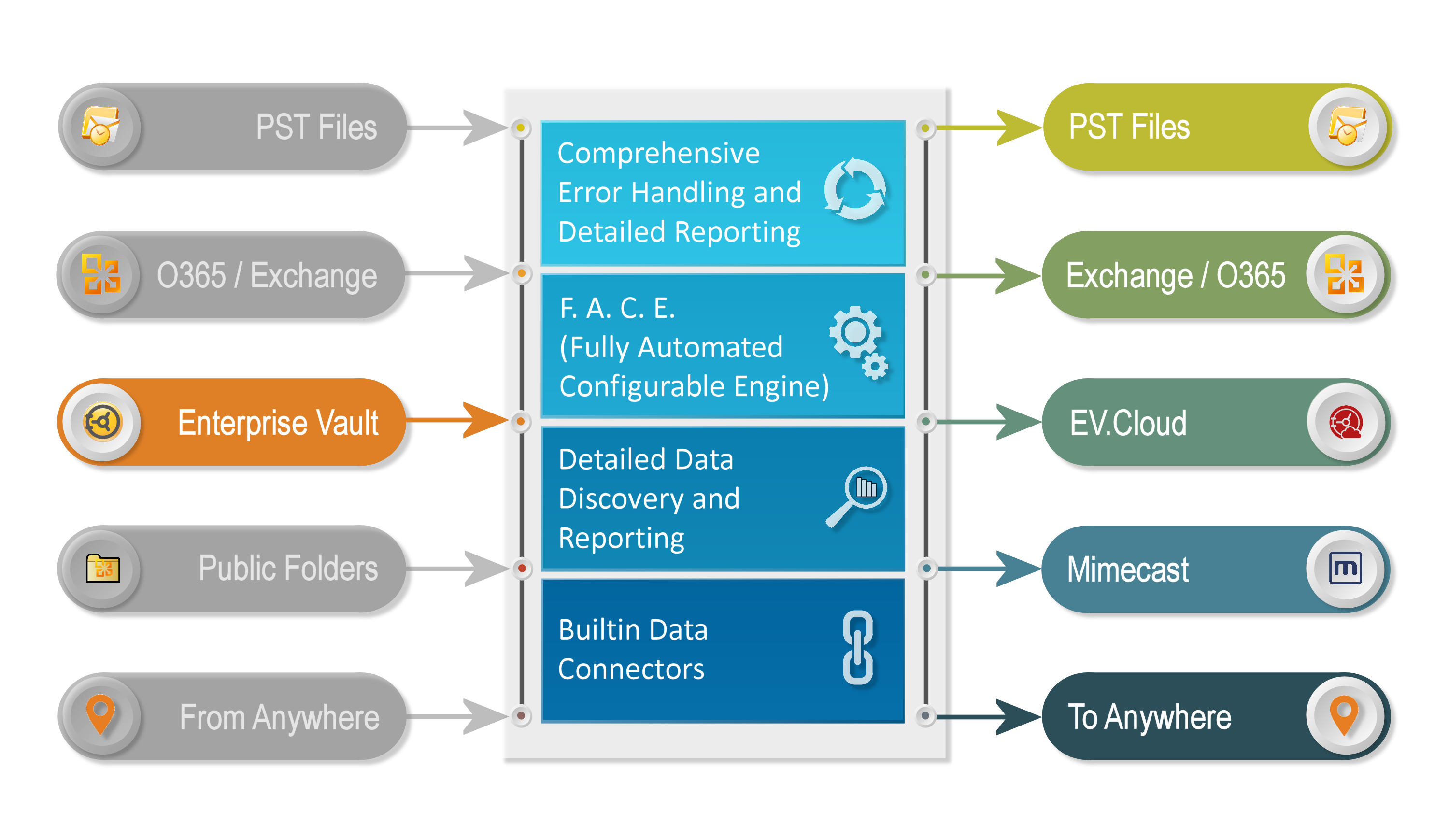Enterprise Vault Migration
Enterprise Vault is the industry leader in email and content archiving. Working in conjunction with Microsoft Outlook through the use of a plugin, historical emails which have been transferred into the Enterprise Vault store are made available either via a virtual Outlook folder or through in-place stub messages called shortcuts. While both of these mechanisms enable users to seamlessly access their archived information from within Outlook, accessing archived data from other devices such as smartphones is a little more tricky. With the release of Microsoft Exchange 2010, the compelling reasons to use a separate archive solution have reduced significantly and many companies are now undertaking Enterprise Vault Migration projects, moving archived data back into Microsoft Exchange or Office 365.The Issues
Archive migration from Enterprise Vault helps to mitigate the issues associated with archive data that include:Incompatible
End of Support
Costly to Store
Inaccessible
Our Software vs Native Tools
Enterprise Vault provides a number of native tools to perform Enterprise Vault migrations. These however have a number of limitations including:
Fully Automated
Extracting data is a pretty manual process using the native tools. Each individual archive has to be selected and configured so that the data extract process will run and overall progress has to be tracked in another tool such as Excel. Our software on the other hand allows for centralised and bulk management, scheduled extractions, plus progress and historical reporting.
Automatic Retry Tracking
Errors during the migration such ash the target platform becoming unavailable cause the native tools to break off; restarting the process will start from the beginning and re-copy any messages that were successfully copied to the destination on the previous attempt. Our software tracks progress; while it will break off in some circumstances, it will automatically restart the Enterprise Vault migration and will continue from where it left off, removing the risk of duplicate messages appearing in the destination.
Error Handling
We have customers where up to 80% of individuals have one or more corrupt messages in their Enterprise Vault archive. The native tools will stop the extraction process when they encounter a corruption. Our software will attempt to extract all data, reporting on and skipping those that are corrupt, so maximising the amount of data that can be copied to the destination.
Direct Source To Destination
Extracting data from Enterprise Vault using the native tools is limited to PST files as a target. Moving data to another platform thus becomes a two stage migration process. Our software will undertake an Enterprise Vault migration directly into destinations including Microsoft Exchange, Office 365 and Mimecast, as a single process.
Enterprise Vault Migration Options
1) PST Migration into Enterprise Vault
While a significant number of organisations are moving data out of Enterprise Vault, there are still many who already have an Enterprise Vault deployment and no short or medium term plans to upgrade their Microsoft Exchange infrastructure. They understand that undertaking an Enterprise Vault migration to remove PST files from the network has many benefits including:- Unsearchable and sensitive corporate data is centralised and made accessible for compliance purposes.
- PST files stored on laptops harbour a data breach risk should the laptop be stolen. Centralising the data mitigates this.
- The risk associated with corrupt PST files and associated data loss is removed.
- Often, terabytes of file storage is released which in turn has a positive effect on backup times and space requirements.

